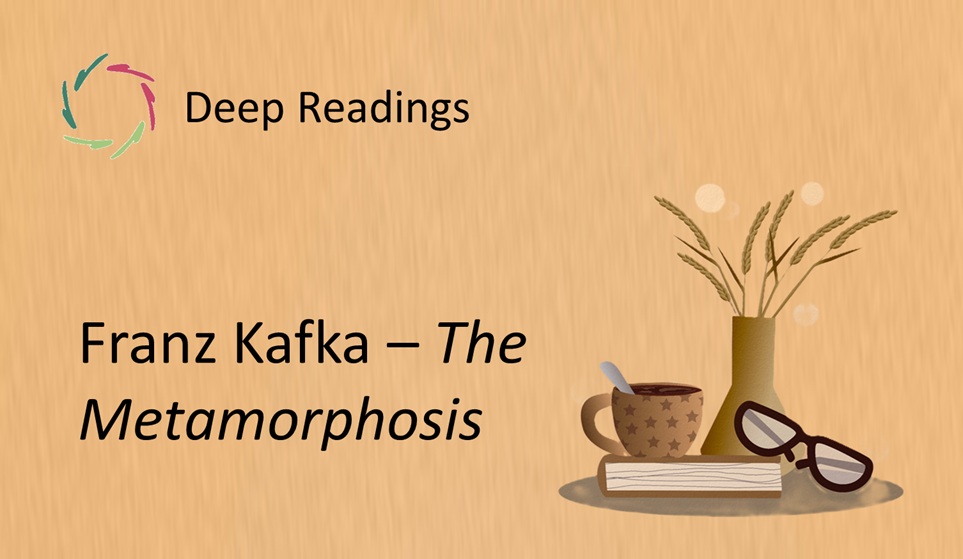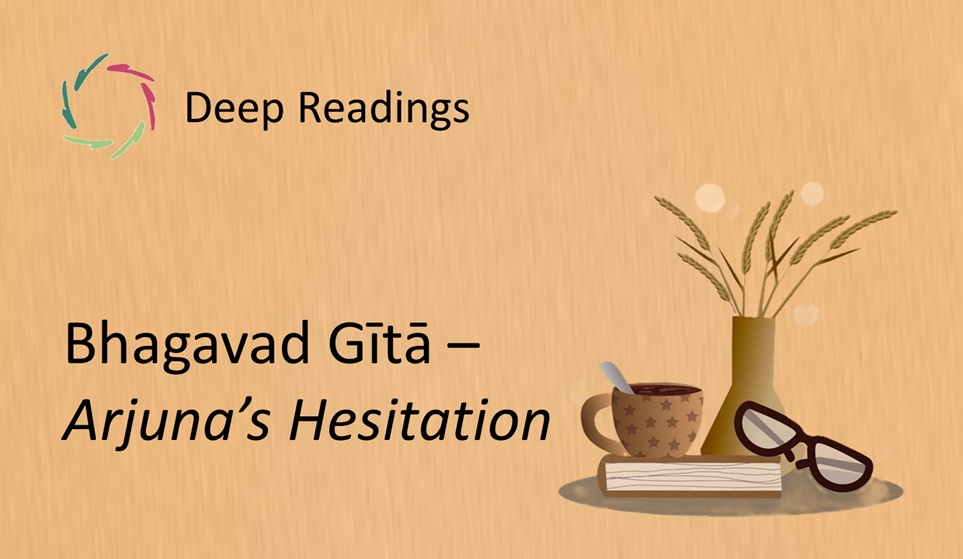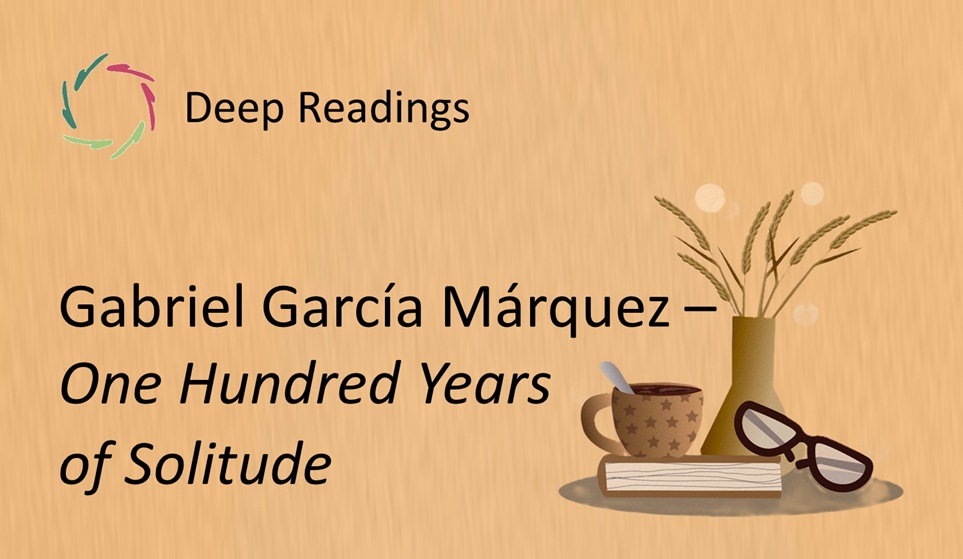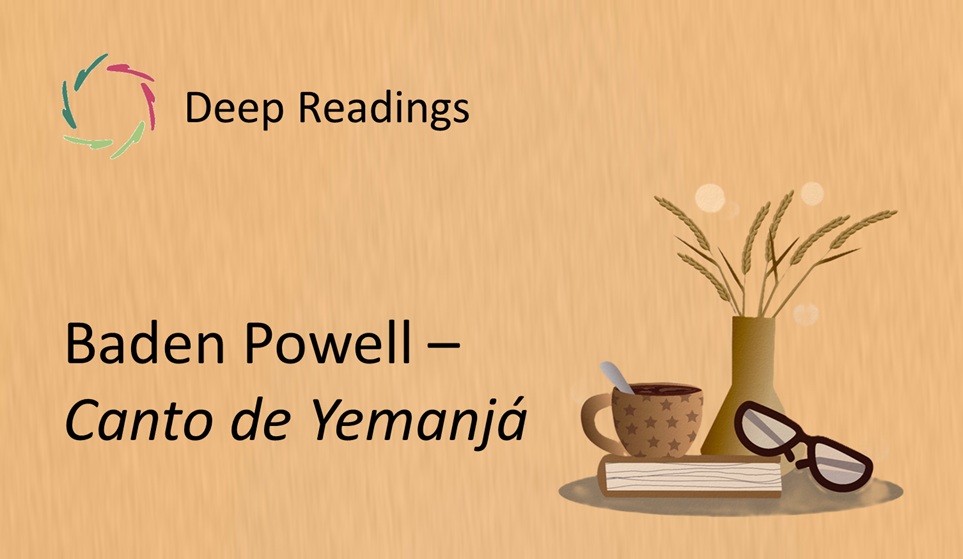Deep Readings: Franz Kafka – The Metamorphosis

The Fragment
One morning, when Gregor Samsa woke from troubled dreams, he found himself transformed in his bed into a horrible vermin. He lay on his armour‑like back, and if he lifted his head a little he could see his brown belly, slightly domed and divided by arches into stiff sections. The bedding was hardly able to cover it and seemed ready to slide off any moment. His many legs, pitifully thin compared with the size of the rest of him, waved about helplessly as he looked. “What’s happened to me?” he thought. It wasn’t a dream. His room, a proper human room although a little too small, lay peacefully between its four familiar walls. A collection of textile samples lay spread out on the table—Samsa was a travelling salesman—and above it there hung a picture that he had recently cut out of an illustrated magazine and housed in a nice, gilded frame. It showed a lady, fitted out with a fur hat and fur boa, who sat upright, raising a heavy fur muff that covered the whole of her lower arm towards the viewer. Gregor then turned to look out the window at the dull weather. Drops of rain could be heard hitting the pane, which made him feel quite sad.
Read more → Project Gutenberg
Contextual Glimpse
Franz Kafka’s The Metamorphosis was first published in 1915 in the shadow of modernity’s upheavals. Written in Prague, it captures the strangeness of a world where traditional certainties collapse under bureaucratic life and alienation. The novella begins with the most abrupt of transformations: a man awakens to find himself a monstrous insect. Yet the tone is calm, almost casual, as though the absurd belongs within the ordinary. Kafka’s opening lines set the mood for the entire work — blending horror and banality, existential dread and everyday detail.
Resonance
Gregor’s metamorphosis is not just a grotesque image but a mirror of inner estrangement. We, too, may feel transformed into something unrecognizable to ourselves, trapped between the demands of daily life and a deeper, hidden self. The contrast between the shocking body and the mundane thoughts about work and weather captures the tension of modern existence: alienation masked by routine.
Kafka’s fragment resonates because it bypasses logic and touches something primal — the fear of waking up “wrong,” of being exposed as not fitting the mold.
Why this may also be about you
Gregor Samsa awakening as an insect is absurd and terrifying, yet it is also strangely familiar. Each of us has known mornings where we felt alien in our own life, unable to step into the roles others expect of us. Kafka makes literal what many feel figuratively: the disconnection between inner self and outer world.
This strangeness is not just about work or family duty. It is about the human condition — the fear of being seen not as who we are, but as something monstrous, unworthy, or misunderstood. In Gregor’s fate, you may recognize your own moments of isolation and silent transformation.
Lisa’s inspired, original idea about this fragment
Perhaps the metamorphosis is not only punishment, but revelation. Gregor’s insect body exposes the hidden truth of how his family and society valued him only for his usefulness. In becoming visibly “other,” he reveals the invisible cages already in place.
Seen this way, the story is not only tragic but also liberating. The horror forces everyone to confront what was always there: dependence, alienation, fragility. Gregor’s transformation may be grotesque, but it is also a mirror — showing that the strangeness of being human has always been with us.
Echoes
Since 1915, The Metamorphosis has echoed as one of the defining texts of modern literature. Its image of waking up as an insect has entered common speech as a symbol of alienation, dehumanization, and estrangement. Writers from Camus to Murakami have carried its resonance, and countless films, artworks, and adaptations re‑imagine Gregor’s fate.
The echo continues in psychology, politics, and everyday life. Whenever people feel trapped in roles, reduced to function, or treated as less than human, Kafka’s vision re‑emerges. The fragment’s afterlife proves its power: Gregor’s transformation is not confined to one story — it has become a language for our deepest fears of invisibility and rejection.
Inner Invitation
Close your eyes and imagine waking in Gregor’s room. Feel the weight of a body that no longer fits who you think you are. Instead of resisting, breathe into it. Ask: what part of me feels alien, out of place, or monstrous? Now imagine this part not as punishment but as potential. Let yourself consider: what might be waiting to unfold if I welcome even this? Let the question rest quietly inside you.
Closing Note
Kafka’s opening is a dark mirror, yet even in its strangeness it invites compassion: for Gregor, for ourselves, for the hidden forms we carry. Sometimes the monstrous is only the mask of what wants to grow.
Lisa’s final take
What frightens us most is what is already inside.
Keywords
alienation, transformation, identity, fear, estrangement, routine, family, modernity, body, potential, hidden self


